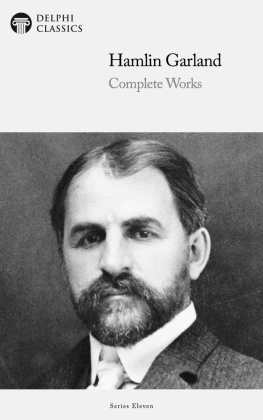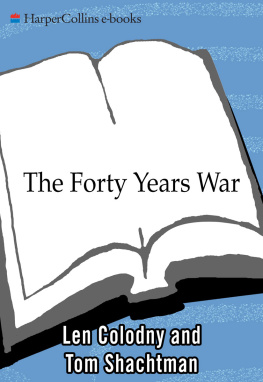The STRUGGLE for MADRID
The STRUGGLE for MADRID
The Central Epic of the Spanish Conflict 1936-1937
Robert G. Colodny
Originally published by Paine-Whitman Publishers.
Published 1958 by Transaction Publishers
Published 2017 by Routledge
2 Park Square, Milton Park, Abingdon, Oxon OX14 4RN
711 Third Avenue, New York, NY 10017, USA
Routledge is an imprint of the Taylor & Francis Group, an informa business
Copyright 1958 by Robert G. Colodny.
All rights reserved. No part of this book may be reprinted or reproduced or utilised in any form or by any electronic, mechanical, or other means, now known or hereafter invented, including photocopying and recording, or in any information storage or retrieval system, without permission in writing from the publishers.
Notice:
Product or corporate names may be trademarks or registered trademarks, and are used only for identification and explanation without intent to infringe.
Library of Congress Catalog Number: 2009042438
Library of Congress Cataloging-in-Publication Data
Colodny, Robert Garland.
The struggle for Madrid : the central epic of the Spanish conflict / Robert G. Colodny.
p. cm.
Originally published: New York : Paine-Whitman, 1958.
Includes bibliographical references and index.
ISBN 978-1-4128-1062-3
1. Madrid (Spain)--History--Siege, 1936-1939. 2. Spain--History--Civil War, 1936-1939--Campaigns. 3. Spain--History--Civil War, 1936-1939--Participation, Foreign. I. Title.
DP269.27.M3C6 2010
946.08142--dc22
2009042438
ISBN 13: 978-1-4128-1062-3 (pbk)
Contents
Go, stranger, and to Lacedaemon tell
That, here, obeying her behests, we fell.
Herodotus, The Persian Wars, Book VII
Terminada est definitivamente la Guerra de Espaa en el terreno de accin, pero no en el campo de pensamiento.
General Vicente Rojo
The Civil War of 1936 to 1939 was one of the most shattering moral experiences in modern political life.
Howard K. Smith
This is a study of the battles that were waged between the armies of the Spanish Republic and the armies of General Francisco Franco for the city of Madrid. It was this struggle, beginning with the collapse of Republican arms at Toledo in September, 1936, and ending with the victory of the Madrid armies at Guadalajara in March, 1937, that determined the duration and characteristics of the rest of the conflict. Hence, it was the central episode of the Spanish War, its focal point for six months. The crucible in which was formed the Ejrcito Popular, the Peoples Army, was the front of Madrid. Here were created the myths which plague the historian. Here, due to international intervention, the Spanish struggle lost its purely national character and became at once a civil war of a profoundly Spanish type, a war of independence waged by a section of the Spanish people against German, Italian and Moroccan armies, and a clash of supra-national ideologies that aroused the deepest passions of peoples far removed from the immediate Spanish interests at stake.
The active participation of the Third International and the government of the Soviet Union on behalf of the Spanish Republican forces was most clearly manifested at Madrid. Here fought the International Brigades in the days of their greatest strength, while against the defenders of Madrid were marshalled the colonial Army of Africa, the Italian Corps of Volunteer Troops, the Condor Legion from Germany, and the cream of the Spanish volunteers raised by the rebel generals.
Alternately hammer and anvil, the Madrid armies wrote a chapter of history that can only be reconstructed in a fragmentary manner by the contemporary historian. The most important archival materials remain sealed. Reasons of state veil the official acts of the various powers that fed the sinews of war into the Spanish arena. Mortality was high on the Madrid fronts, and the dead men who tell no tales took with them many of the secrets of the defense of the city, leaving lacunae in the sources that neither time nor the most diligent research can ever fill.
But though important memoirs will never be written, and the papers of the Soviet, Italian, German and Spanish war offices may not be published for decades to come; though the press files are incomplete, and most quantitative data are lacking or unverifiable; though the passions aroused by the war distort most contemporary accounts of the fighting, the totality of these obstacles present no insurmountable barrier to a preliminary investigation of the Madrid battles. It is the authors opinion that such a study should be undertaken while many of the principal actors in the Madrid tragedy still live. There may be errors in the account that follows, but there is little malice, and if Truth has been affronted, the witnesses may yet speak, and from the debate that ensues, the margin of error may be reduced.
... Mit demeingreifen Deutschlands, Italiens, und Portugals ist Spanien ein internationaler Kriegschauplatz geworden. Nicht mehr kmpfen die Milizen der Regieroung gegen aufstndische Generale, Fashistiche Phalangisten und Karlisten allein. Sie kmpfen gegen das Dritte Reich, Italien und Portugal.
Franz Spielhagen
1. The Army of Africa
The sorrows and the follies of the Spanish Republic were evident on the highway that ran for seventy kilometers from Toledo to Madrid. The Republican militia that had been laying futile siege to the Alczar for six weeks were fleeing before the Army of Africa that had been flown in German and Italian transport planes to the Spanish mainland in the first weeks of the war.
Unternehmen feuerzauber (Operation Magic Fire),
At the moment when the Republican prisoners were being butchered in Toledo,
Column No. i, commanded by Lt. Colonel Asensio:
The First Tabor of Regulars of Tetun; The Third Tabor of Reg-uars of Tetun; The Sixth Bandera of the Legion; A battery of five 75 mm. artillery.
Column No. 2, commanded by Lt. Colonel Barrn:
The First Tabor of Regulars of Melilla; The Second Tabor of Regulars of Melilla; The First Bandera of the Legion; A battery of five 45 mm. artillery.
Column No. 3, commanded by Lt. Colonel Delgado Serrano:
The First Tabor of Regulars of Alhucemas; The Third Tabor of Regulars of Alhucemas; The Fourth Bandera of the Legion; A battery of five 105 mm. artillery.
Column No. 4, commanded by Commander Castejn:
The Second Tabor of Regulars of Ceuta; The Fifth Bandera of the Legion; The Sevilla Volunteer Battalion; A battery of five 105 mm. artillery.
Each of the four columns possessed its own group of combat engineers, signal units, medical and transport companies, supply and scouting sections. Thus, General Vrela had under his control four miniature mobile divisions. Also at the disposition of this corps were two batteries of three 155 mm. artillery, mobile antiaircraft machine guns, signal sections, engineers, and transport companies.
To the north of Vrela in the Sierra de Gredos were deployed the cavalry columns of Colonel Monasterio, which were composed of the following mosaic of units: six squadrons of sabres, each squadron made up of 125 men, a squadron of machine guns, of twelve guns, a Harca del Rif with two machine gun sections, a company of marines, a mejaznia or Moroccan police units of fifty men, and independent service sections.












